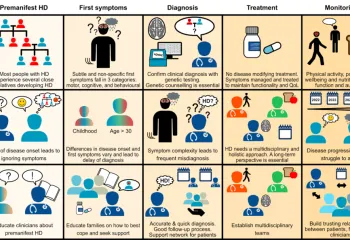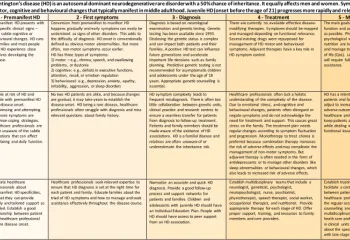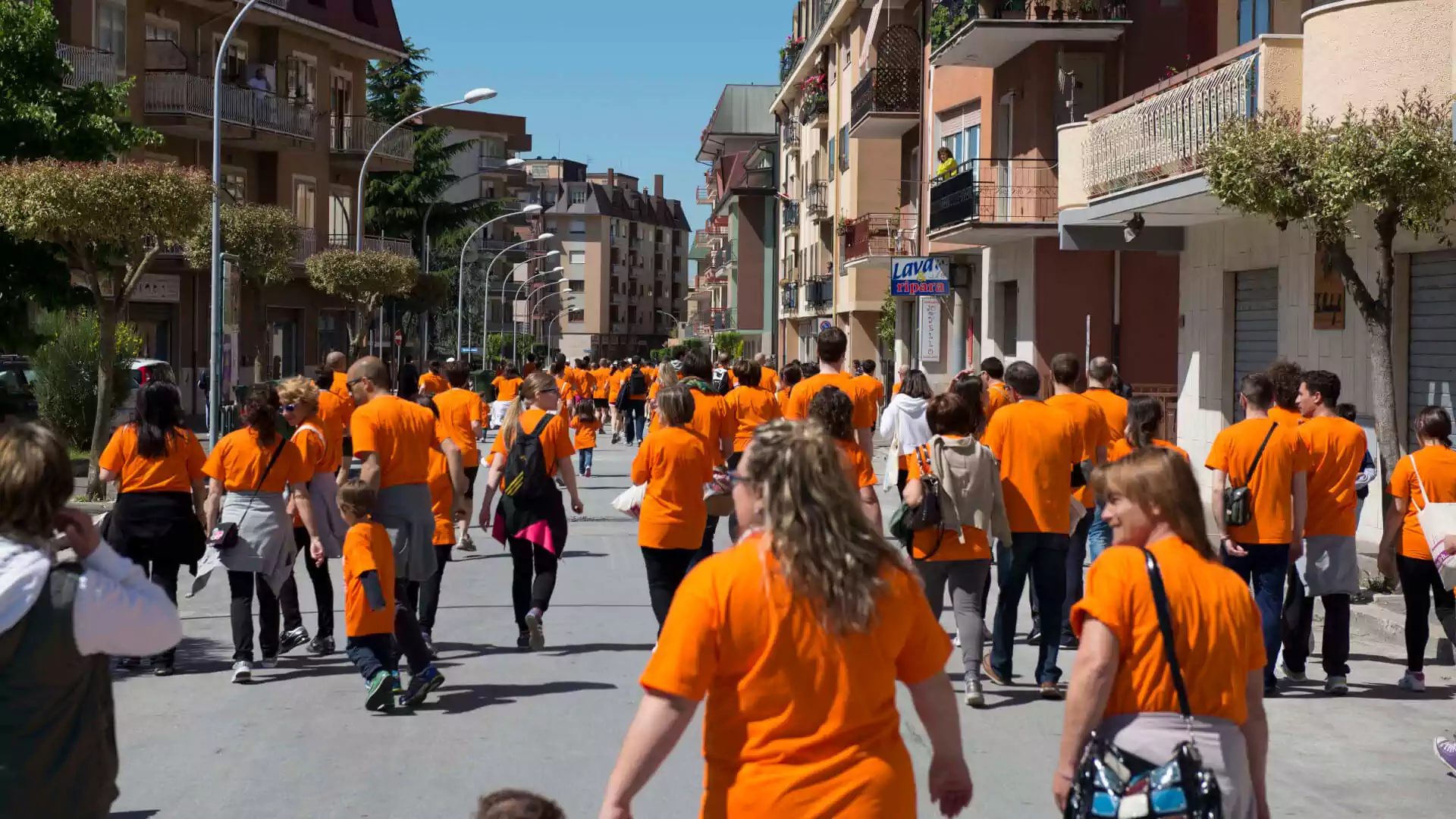
HD Patient Journey
The patient's 'journey' within the health care system is the ‘travel’ from the disease suspect to the (correct) diagnosis to the treatment. It is not always an easy path and, above all, not the same for everyone.
The differences depend both on the subjective condition of a person and on the available clinical services and skills where the individual lives. This is true for those living in the different Italian regions, as well as for those living in the different EU Countries.
The Huntington Disease 'traveling' population is heterogeneous, with different psychological and physical conditions, and therefore, with different needs:
What you see: the tip of the iceberg,
The patients, the so-called symptomatic people, people with visible signs of the disease. The patients will undergo an initial, milder disease phase, will then move on to a more serious intermediate phase, and will reach the final stage of the disease, in which their physical and mental autonomy will progressively disappear. All this, over a period of about 15-20 years.
What cannot be seen: the submerged part of the iceberg.
The so-called 'at risk' people, children and siblings of an affected person, each of whom has a 50% risk of inheriting the genetic mutation. These people may decide to know their future in advance by choosing to undergo the predictive genetic test. In the meantime - regardless what their decision will be - they will live in a condition of doubt and uncertainty for their future and will be conditioned in their life choices by this 'sword of Damocles' pending on their heads.
Asymptomatic people, those who carry the mutated gene but don’t manifest visible signs of the disease yet. Those are defined as pre-symptomatic. They are not still patients, but they will turn into patients, sooner or later. Impossible to predict when this will happen. These people begin to change in a subtle and almost imperceptible way, through signs that would be insignificant in anyone else: for example, awkwardness of a movement together with the difficulty of controlling emotions.
Enclosed you can find the documents published on the ERN-RND website, as an output of a collaboration with HD patients' representatives,


